Five major questions surrounding the chase for the most men's majors
By Peter Bodo Apr 23, 2021Debating best-of-three sets vs. best-of-five
By Steve Tignor May 21, 2021The Tennis Conversation: Tim Henman
By Matt Fitzgerald May 21, 2021The Pick: Lorenzo Musetti vs. Sebastian Korda, ATP Lyon second round
By Cale Hammond May 18, 2021In Geneva, Roger Federer loses clay-court comeback to Pablo Andujar
By John Berkok May 18, 2021The Pick: Jannik Sinner vs. Aslan Karatsev, ATP Lyon first round
By Cale Hammond May 17, 2021Officials deny that 2022 Australian Open could move
By Kamakshi Tandon May 17, 2021Week in Preview: Serena, Federer lead stars tuning up for French Open
By Steve Tignor May 17, 2021Nadal finds the final answer for Djokovic in roller coaster Rome final
By Steve Tignor May 16, 2021Rafael Nadal battles past Novak Djokovic to win Rome for 10th time
By John Berkok May 16, 2021Five major questions surrounding the chase for the most men's majors
As Rafael Nadal, Novak Djokovic and Roger Federer head to Europe for clay and grass competition, The Great GOAT Race enters an intriguing stretch.
Published Apr 23, 2021
Advertising
With the familiar slate of European clay-court events underway, tennis appears to be regaining some semblance of normalcy after a year that left the continent's red battlefields devoid of ball marks and the long gashes left by players sliding into their shots. Wimbledon, too, is making plans to rebound after closing up shop in 2020 due to the pandemic.
Also resuming: The Great GOAT Race, with the game’s titanic trio—Novak Djokovic, Rafael Nadal and Roger Federer—vying to complete their careers with the most Grand Slam singles titles. Federer and Nadal are deadlocked with 20 apiece; Djokovic has 18.
To most experts, the GOAT debate is just a pleasant barstool avocation. Paul Annacone, the Tennis Channel analyst and former coach of Federer, summed up the view when he told me, “I don’t love the [GOAT] argument, there are just too many variables. It really just comes down to opinion.”
The men in this race aren’t consumed by the desire to be hailed as the GOAT, either. At the same time, all three would love to end up with the most major titles. With that in mind, let’s look at five major questions surrounding this chase:
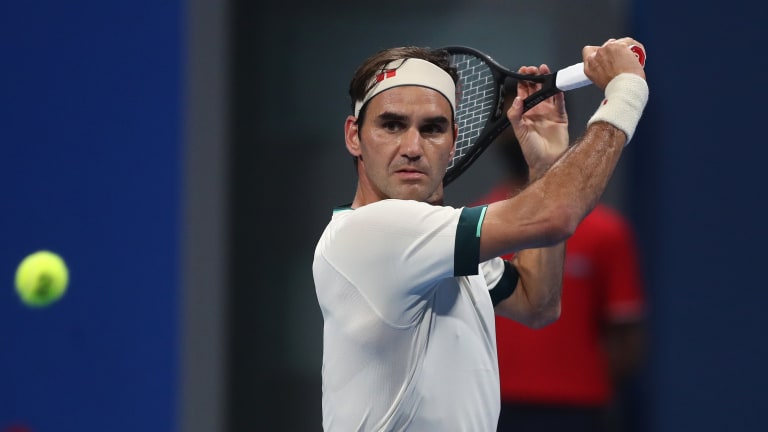
Five major questions surrounding the chase for the most men's majors
© Getty Images
Advertising
The challenge for the global superstar is daunting, but, as ESPN analyst Brad Gilbert said in an interview, “Federer has always been incredible when it comes to off-season training. He’s put himself in a position to win again, time and again. And it isn’t like he was losing to guys ranked in the 50s or 60s before he left the game, either.”
But the inescapable fact is that Federer, whose ranking is down to No. 8, will turn 40 before the US Open. He hasn’t won a major since the 2018 Australian Open, and he hasn’t reached the final of the US Open—a tournament he won five consecutive times earlier in his career—since 2015. Plus, Federer is only now emerging from an injury-and-pandemic induced break, during which he played just two matches in the last year (a trial run to test his knee and fitness in March at Doha). Since 2020, he's played just eight matches on tour.
“Roger is running out of runway,” Luke Jensen, now a television analyst and WTT coach, told me. “It would be great for the game if he got another one, but there are so many good young guys now. And they no longer fear him. They’re like, ‘Bring it on.’”
Federer is scheduled to play one clay-court tune-up tournament, in Geneva, before Roland Garros. Then he will transition to grass as usual at Halle. But make no mistake, as much as Federer enjoys the ambience and challenge at Roland Garros, his maneuverings are all about Wimbledon.
“If he can get six, seven matches in [before Wimbledon], that’s great.” said Annacone, who would pencil in a healthy Federer as the No. 2 favorite (behind Djokovic) at the All England Club. “Roger doesn’t need to win anything to go into Wimbledon with a shot. Losses don’t dent his psyche. If he gets in some matches and is healthy for grass, he will be ecstatic.”
Federer’s opportunities to add to his major haul are rapidly being diminished by his age, the toll of injuries, and the challenge of different surfaces, but it would be unwise to count him out. An eight-time Wimbledon champion, he has grass-court juju that few others possess.
Patrick McEnroe, a coach and ESPN analyst, told me: “On hard courts, there’s a good number of guys who can upset him; while on grass, especially at Wimbledon, there’s not that many guys who have the tools to beat him.”
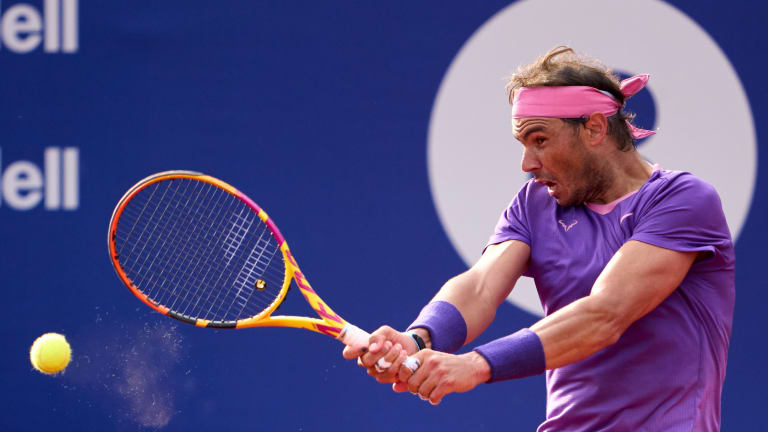
Five major questions surrounding the chase for the most men's majors
© Getty Images
Advertising
Nadal is in a commanding position to take over the lead in the race at the next major because of his extraordinary Roland Garros record: 100-2, with 13 titles. Annacone, who isn’t given to making rash pronouncements, predicted—only half-joking—that, “Rafa will win Roland Garros four or five times, and then win it four or five times more after he’s retired.”
Most analysts believe Nadal, currently ranked No. 3, could very well salt away two or three more French Open titles, which might be enough for him to get beyond the reach of his rivals. Yet all good things come to an end, and Nadal himself isn’t foolish enough to put all his eggs in the Roland Garros basket.
There’s one outstanding reason that Nadal will arrive in Paris the prohibitive favorite, no matter what happens in the run-up events: Going all the way back to 2005, Nadal has never lost a best-of-five-set final on clay (at the start of Rafa's career, best-of-five-set finals were more common). He is also 125-2 in best-of-five-set matches on clay (losses to Djokovic and, famously in 2009, Robin Soderling).
“The longer it goes on clay the better he gets and the more devastating he is,” McEnroe said. “The other two [Federer and Djokovic] will beat the crap out of you, but not in anything like the same way Rafa physically punishes you on clay.”
In the event Nadal doesn’t secure his 14th French Open title, he will still be in with a good chance at both Wimbledon and the US Open. He hit a rough patch at SW19 after winning two titles, but he’s been a semifinalist in the last two editions, losing an overtime heartbreaker (10-8 in the fifth set) to Djokovic in 2018, and a four-setter to Federer in 2019.
A four-time US Open champion, Nadal thrives on the ambient conditions in New York (he elected not to defend his title there in 2020, due to the pandemic). Day matches in the heat and humidity increase the value Nadal’s physicality and, as McEnroe said, “The ball in New York, on those courts and in that heat, tends to really jump up. So Nadal's topspin is really effective.”
The French Open, though, is still Nadal’s ace in the hole.
“Remember how many people said don’t bet on Tom Brady in the Super Bowl against the [Kansas City] Chiefs?” Jensen said. “Same with Rafa. I’d have to see him lose at Roland Garros before I put anyone as a favorite above him.”
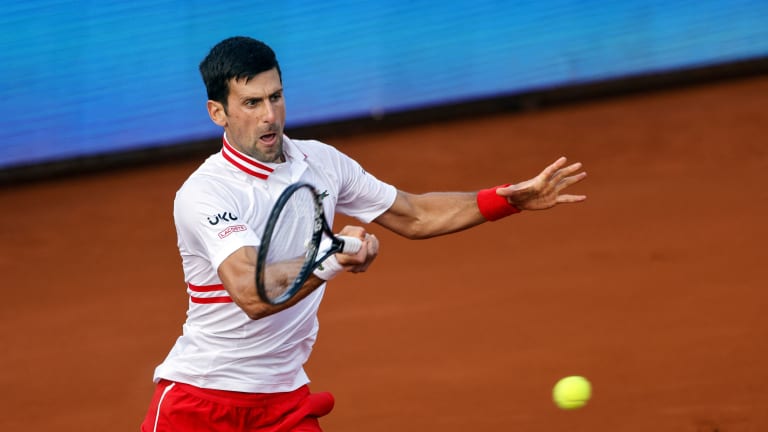
Five major questions surrounding the chase for the most men's majors
© AFP via Getty Images
Advertising
The top-ranked player for a record 316 weeks, and counting, Djokovic has never embraced the monkish approach to rewriting the history books. He has sought rather than avoided attention, unafraid to trigger controversy. The passionate Serb has a knack for sticking out his neck, speaking up, becoming embroiled in activities and issues that far-less accomplished players would find disruptive of their focus.
“I used to think that in a perfect world, you want simplicity,” Annacone said, who shepherded Federer through some of his finest years. “But it really depends on your personality. Novak does thrive on irreverence, and a little bit on being embattled. The complication is that he also wants to be loved, like Rafa and Roger.”
Jensen, who believes Djokovic “has always lived in a kind of chaos,” thinks the world No. 1 feeds on the drama some of his actions create. He cites the way Djokovic slumped in mid-2016, only to come “roaring back” despite his off-court, private struggles and an arm injury.
Others, including McEnroe, suggest that Djokovic draws “extra energy” from the myriad distractions and uses emotion as rocket fuel—it hardly matters if the emotion is positive or negative.
Djokovic has plenty of incentive to dial in his resolve over the next few months. He trails by two titles at a stage in one's career when victories begin to get progressively more difficult. He will be preparing for his first opportunity to bag major No. 19 at, among other red-clay tournaments, the Serbian Open in Belgrade. That will be a distraction as well as a tune-ups because Djokovic will host the event at his own tennis center. Among his many obligations, will Djokovic present the trophy to himself, should he win?
“He’s focused on Paris, but everything is about him,” Gilbert said, ticking off Djokovic’s ongoing efforts to build a players union (in defiance of the ATP Tour), his event promotions, his role in the controversies during the Australian Open over Covid protocols for players.
But on top of it, Gilbert noted, Djokovic sustained an injury (torn stomach muscle) during his third-round match with Taylor Fritz. He won the match, and then went all the way.
“A lot of people thought he was done after that Fritz match,” Gilbert said. “But he pulled through it, and ended up winning the tournament again.”
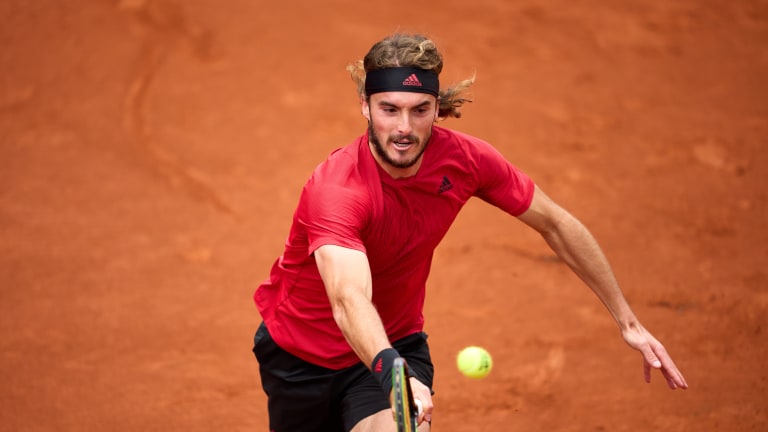
Five major questions surrounding the chase for the most men's majors
© Getty Images
Advertising
The first men's red-clay tournament in Europe, Monte Carlo is generally seen as the tune-up for the more prestigious Masters events in Madrid and Rome. It would be a mistake to read too much into the results. Nevertheless—neither Djokovic nor Nadal reached the semis, and the final was fought out between two of the hottest young players on the tour, with Stefanos Tsitsipas beating Andrey Rublev.
An omen?
“The French Open probably belongs to Nadal, and none of the young guys are very good on grass—yet.” said McEnroe. “The best chances for the younger guys is a pretty long way off, on hard courts in New York and Australia.”
At all of the Slams, variables shaped by the best-of-five-set, two-week format—which include the management of physical and emotional reserves, as well as the need to adjust to the changeable outdoor conditions—will be obstacles for the younger challengers.
McEnroe said he was disappointed “by the effort and intensity level” shown by No. 2-ranked Daniil Medvedev when he lost this year’s Australian Open final to Djokovic—especially after the way Medvedev had battled Nadal in the 2019 US Open final.
“He had no game plan I could see,” McEnroe added, “And he never signaled that he was willing to pay whatever physical price was required to win, which is what you have to do with Djokovic.”
Thiem, who interrupted the Big Three’s 15-tournament Grand Slam winning streak when he won the US Open last September, swooned in the aftermath.
“Some of that is post-first major re-acclimatization,”Annacone said. “He’s in a new landscape and to me he has not gotten totally settled in being one of those top guys.”
Gilbert predicted before Monte Carlo that a breakthrough by one or more of the younger players at one of the clay Masters seemed inevitable. Tsitsipas’ feat is still a far cry from winning a major, but he confirmed Gilbert’s claim that he’s the most versatile of the younger players, capable of challenging on clay as well as hard courts.
Alexander Zverev’s service yips has become a major stumbling block in a sport that at the highest level often hinges on fractional differences.
“It always comes down to the most minor of details, but that’s what it will take to beat these guys at big tournaments—the full package,” said McEnroe. “Not only are the top three guys physically better, but their racquet skills are better.”
Annacone’s assessment was blunt: “If they are all healthy, one of those three will win the French Open and Wimbledon.”
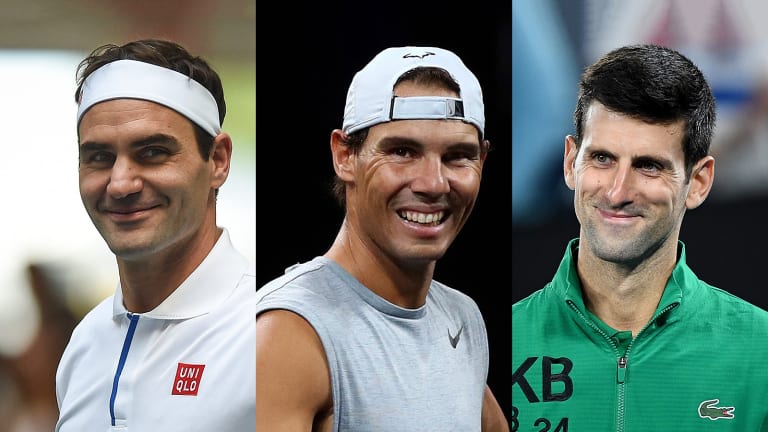
Five major questions surrounding the chase for the most men's majors
Advertising
Most experts believe Djokovic will end up with the most major titles. At 33, he’s a year younger than Nadal, and six years younger than Federer. Both of his older peers already have had more serious, lasting injury issues. To most, Djokovic is the hands-down favorite in three of the four majors.
“He just has too much youth,” Jensen said, “He’s good on all surfaces—and at some point, doesn’t Nadal have to come down a little on clay?”
McEnroe agreed.
“If Djokovic can stay healthy and hungry—which it appears likely—he should be able to win one to two majors a year for the next two or three years.”
If is the longest two-letter word in the English language, but Djokovic seems well-positioned to surpass the twin icons he has been chasing his entire career.
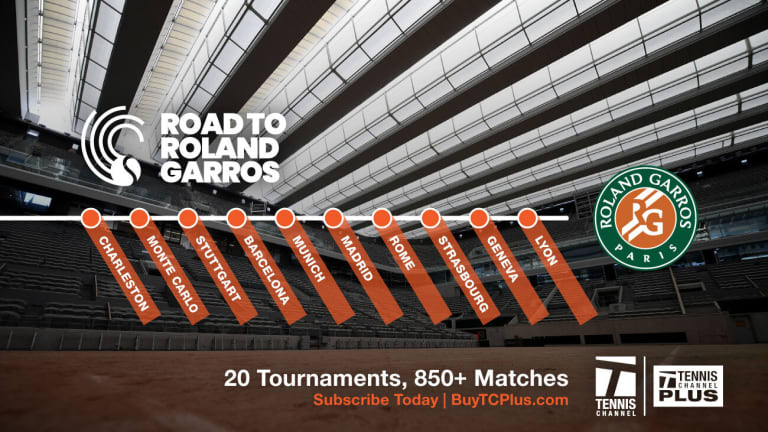
Five major questions surrounding the chase for the most men's majors